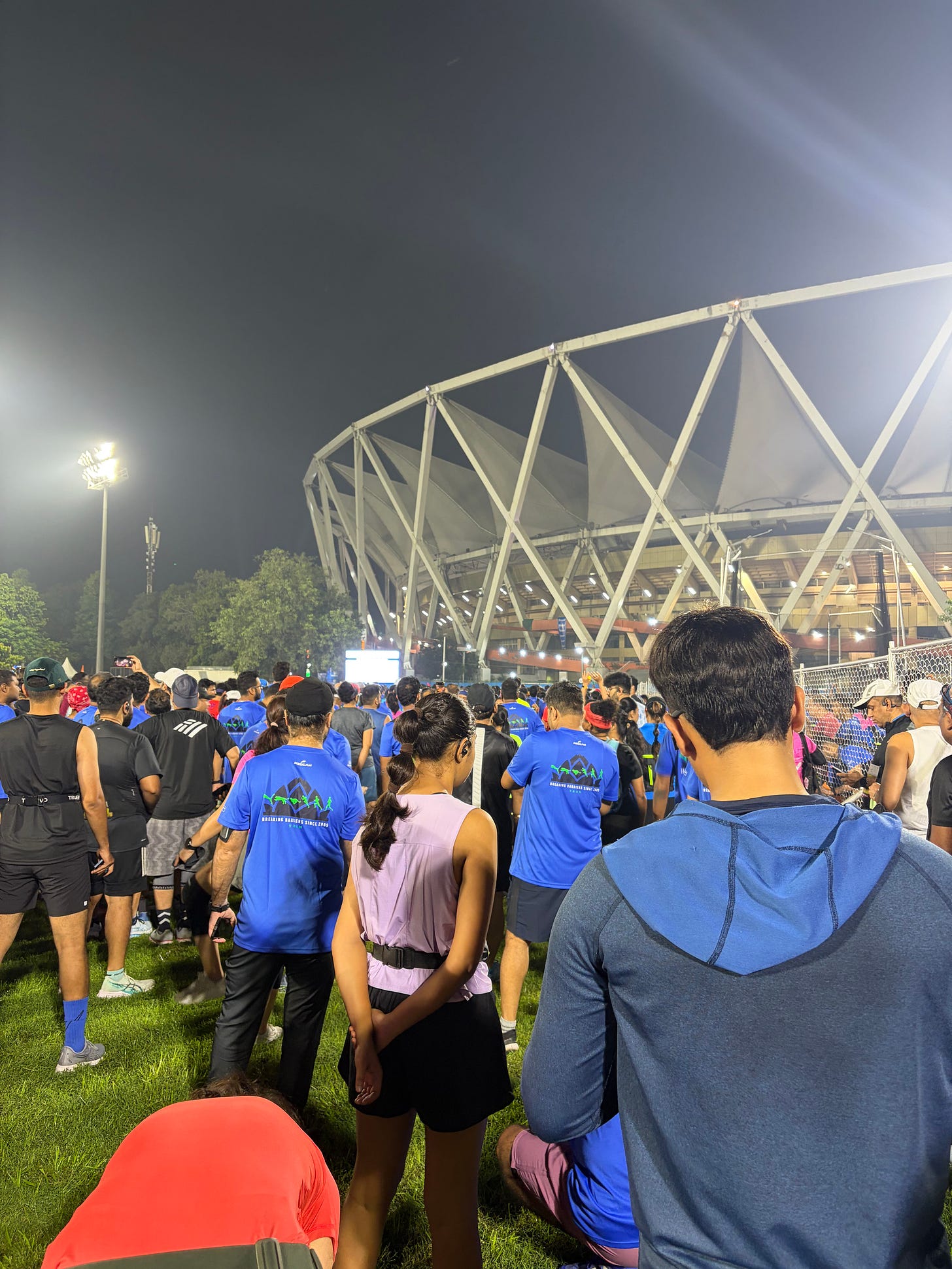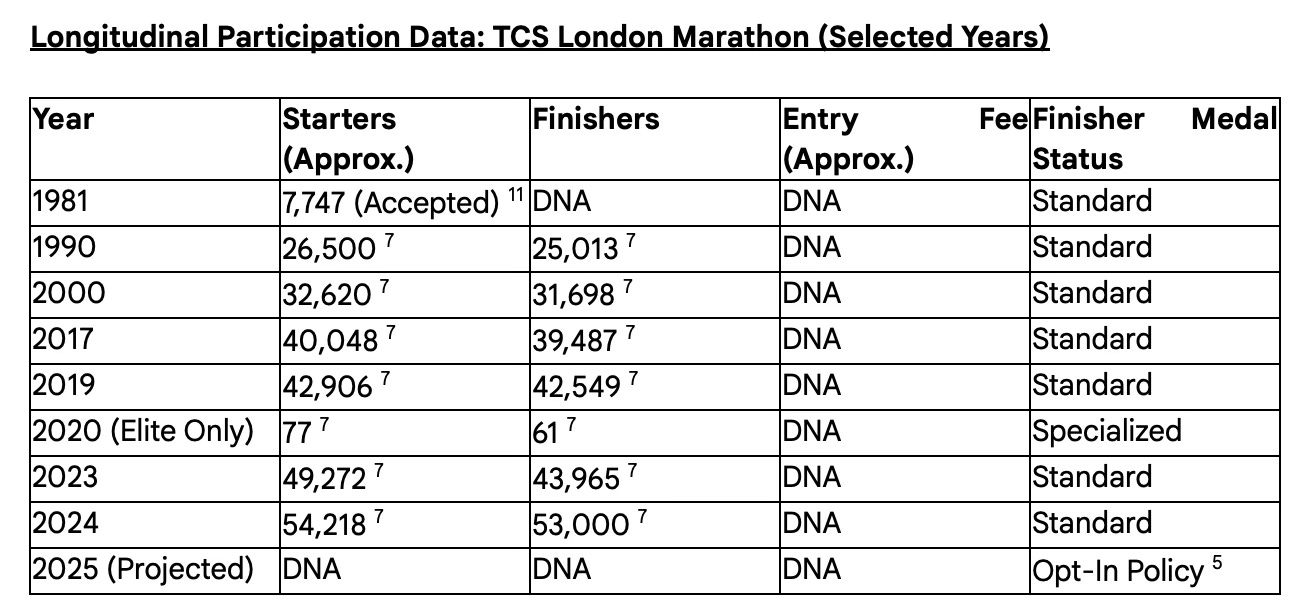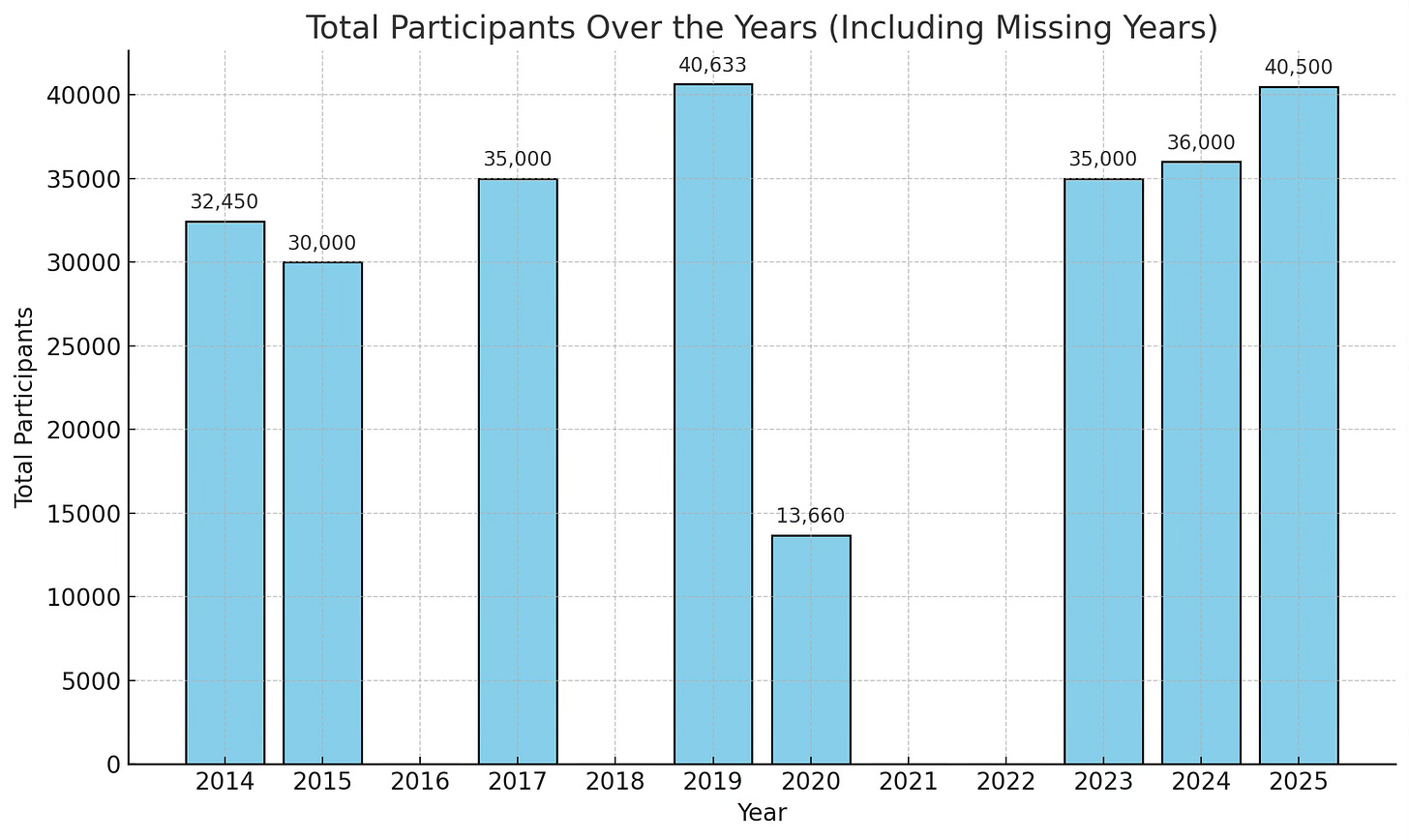How Did We End Up Paying For Runs?
Dredging into the history of running as a cultural movement
I recently participated in the 20th edition of Vedanta Half Marathon and go some sexy pics out of it. I’ve been evangelising running among my friends and seeing a lot of running reels on my Instagram feed.
One of these reels suggested that it was a stupid idea to pay for running while you can do it for free. It went viral. There were counters to the reel justifying the spend as well.
Yesterday, a conversation threw up another angle to this whole “pay, run and get a medal” debate. We ended up by concluding that the person who turned running craze into a business opportunity should be congratulated.
I have not gone out for running over the last one week, thanks to terrible air quality in Delhi. In the mean time, I have also ended up doing some research on the history of running. All of this has given me the opportunity to write about this topic.
The Boston Marathon
After experiencing the spirit and majesty of the Olympic Marathon, B.A.A. member and inaugural US Olympic Team Manager John Graham was inspired to organize and conduct a marathon in the Boston area.
A distance of 24.5 miles from Metcalf’s Mill in Ashland to the Irvington Oval in Boston was eventually selected. On April 19, 1897, John J. McDermott emerged from a 15-member starting field and captured the first B.A.A. Marathon in 2:55:10.
Source: Boston Marathon Website.
Boston Marathon was the first document running event for the public outside professional competitions. Here are some interesting factoids I learnt.
Only 15 people participated. They did not give medals to all finishers till 1983.
Till 1968 participants were not asked to pay money
From 1969 to 1999 the estimated fee was between $5 to $170. That’s a huge range but the real inflation starts after this.
Between 2000 to present day the fee has escalated to $265, thanks to higher levels of security protocols and higher demand.
The trend among all other major running events around the world has been similar. The rising costs are directly related to operational costs of the event and the running boom in recent times.
These are some data points extracted with help from Gemini.
The Running Boom in the USA and Nike
The running “boom” has been noted in many random articles. At its peak almost 25 million Americans were involved in some form of running activity.
The effect of this can be seen in popular TV shows where lead characters are often shown running regularly. The memorable ones include Suits, House of Cards and more recently The Diplomat.
People rightly or wrongly attribute the running boom to Nike (as there’s a direct benefit to the company revenues). But two names deserve credit for laying the foundations of the running boom —Dr Ken Cooper and Bill Bowerman.
Dr Ken Cooper through his research proved the cardiovascular health can be improved by running regularly. His book “Aerobics” greatly contributed to the scientific rationale for running.
However, the chief evangeliser of running among masses was Bill Bowerman, a track coach at University of Oregon. Bowerman was introduced to running as a fitness activity during a trip to New Zealand.
He was influenced by a coach named Arthur Lydiard. He brought back this knowledge and wrote a manual that served as national model for fitness programs. He also authored a book called “Jogging” which became a best seller.
Bill Bowerman ended up as a co-founder of Nike (though Phil Knight gets all the credit). The marketing impetus and product innovation required for making a cultural shift in the USA (and subsequently the world) was supercharged by Nike’s efforts.
The Running Scene in India
“Every 90 seconds, a new runner joins this movement,” said Vivek Singh, joint managing director of Procam International, organisers of the Tata Mumbai Marathon (TMM). “In 2004, we started with 10,000 registered runners. Today, in India, 2.5 million people participate in at least one race annually.”
Source: The Print
It’s hard to say who kicked off the running culture in India. One can safely say that there was a trickle down effect from the west. Vivek and Anil Singh, promoters of Procam International (a leading running event organiser) were inspired to start something back home after running the London Marathon in 2003.
But one can safely say a minor running boom is well under way in our country. This is reflected in 65,000 registrations to the Tata Mumbai Marathon (up from 19,000 during the first edition). This has been fuelled by Instagram and social media more than any inspiring athlete or athletic event.
One can see a surge in number of run clubs and coffee raves. People are seeing running as a cool activity. The rewards are multiple even if you exclude good cardiovascular health. The oomph factor and the rush of happy hormones after running are rewards that every runner enjoys.
Though I started running accidentally, I have made it a habit over the last two years. It all started with a 10k run during Vedanta Delhi Half Marathon event in 2024.
So far, I have spent approximately 15k on registrations for six official runs. Further 15k on shoes and apparel. Till this very moment I didn’t even count the spend.
In my opinion, the emotional and health benefits derived far outstrip the costs. During the same time I have lost 10kgs. And one can’t quantify the good mood after finishing a run.
I wanted to find more about the Vedanta Delhi Half Marathon which recently concluded its 20th edition. I ran my sixth half marathon and got my best time ever.
The curious cat in me pulled out data about participation rates since inception. Apparently the peak year is way back in 2019, though the number is slowly growing over the last three years. This is the data I extracted from Gemini.
Should We Pay for Running?
One doesn’t have to pay money for practice runs. We have already paid a lot of taxes for maintenance of public parks in our cities.
So paid running events by clubs don’t make sense to me. That said, waking up early and hanging out with other runners is a far better way to spend money when compared to spends on clubs and alcoholic beverages.
I would still defend paying for big running events where operational costs are involved. I’m unsure whether the organisers of big running events are making a profit, but even if they did they are promoting a healthy habit.
Any enterprise that has a net positive impact on society deserves all the profit it makes, though one can still complain about the trash strewn on streets after these runs.
No matter what you say, people are ready to pay for things that make them look good and feel good. And running events, sure as hell do both.






